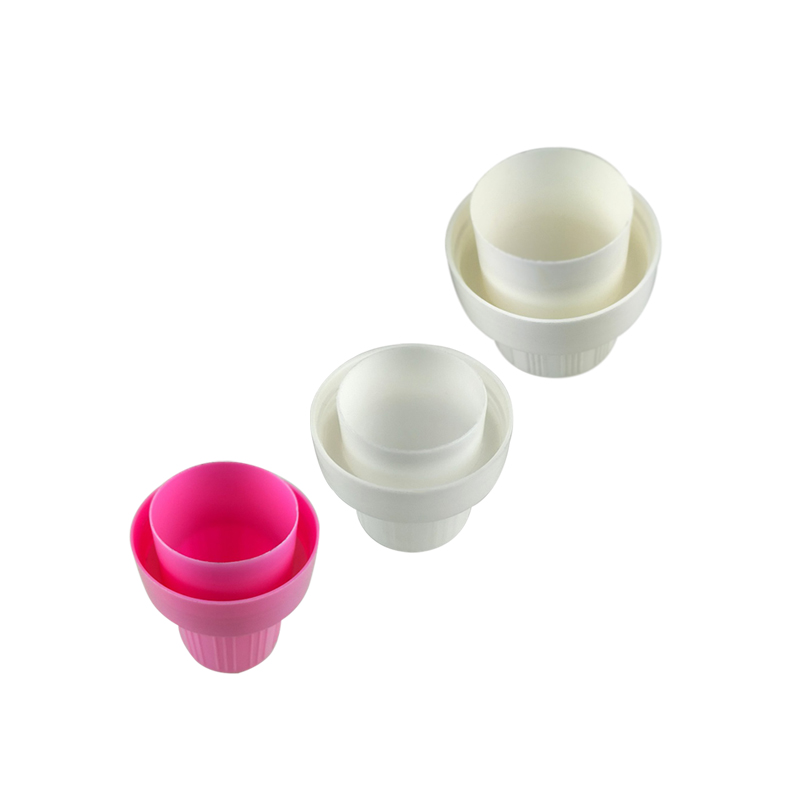Manufacturers of eye drops and nasal products will have up to two years to develop the special packaging.
Pharmaceutical companies will be updating packaging for more than 40 commonly used products following a Consumer Product Safety Commission (CPSC) rule requiring child-resistant (CR) packaging for product containing imidazolines. Hdpe Plastic Bottle

The regulation impacts all prescription and OTC medications with the equivalent of 0.08 mg or more of imidazolines, a family of drugs that perform as vasoconstrictors when applied topically. Most of the products affected are eye drops and nasal sprays that are currently packaged in non-CR squeeze-to-dispense plastic dropper bottles and metered-dose sprayers.
With the final rule’s publication in December, suppliers of container closure systems are gearing up to help manufacturers bring new closure/container solutions to market.
Amcor Rigid Plastics North America ( www.amcor.com ) has developed a new two-piece, push-and-turn closure designed to fit on existing containers for meeting the new requirement.
CPSC in the final rule grants a one-year conditional stay of enforcement beyond the rule’s Dec 10, 2013, effective date to provide industry with time to develop and test the new packaging. A manufacturer availing itself of the stay must provide a detailed timeline of the steps required to produce the CR packaging, with quarterly reports on the progress for each affected product.
Products containing imidazolines can cause serious adverse reactions in children who accidently ingest them, requiring the special packaging to protect children under five years of age. When orally ingested, the drugs are absorbed quickly into general circulation producing systemic effects. This can result in severe life-threatening consequences including decreased breathing, decreased heart rate, and loss of consciousness, which requires hospitalization, CPSC says.
CPSC initiated the regulatory change in response to over 5000 adverse events reported between January 2007 and December 2009 associated with ingestion of imidazolines by children under the age of five.
The ruling will affect products currently on the market as well as many pending market launches, Meadwestvaco Healthcare (MWV) advises about the rule’s implications.
Though some CR packaging is available to replace the non-CR designs in bottles and spray systems, many manufacturers will need the 24 months to develop and test packaging specific to their applications.
“The new regulatory extension will likely impact the sale of circa 60 million units of products currently sold in the United States on an annual basis” and impose tight timelines on manufacturers that have not anticipated the rule, MWV says.
“The challenge to meet this regulation is not trivial. Manufacturers will need to embark on a formal development program, in partnership with their packaging suppliers, to identify, develop, verify, and validate the best CR solution for their product before they can industrialize and bring to market an appropriate solution,” MWV says.
The process will likely require new tooling and changes in assembly and filling techniques. CR protocol testing for showing CR and senior-friendly performance typically takes two-to-four months, CPSC notes.
Labeling changes will likely be made to describe how to operate the CR function. Companies will need to embark on marketing campaigns to explain the new packaging to consumers, healthcare providers, and advocacy groups, MWV advises.
MWV has CR solutions for both squeeze-to-dispense bottles and metered-dose droppers and sprayers that have passed the CPSC CR testing protocol, and has developed more than 35 commercialized CR packages, says Joe Keenan, a biomedical engineer and director for MWV Healthcare.
In developing CR packaging, MWV works with customers to “review brand challenges, map the patient experience, and provide the resources and expertise needed to make CR packaging changes with maximum clarity and minimal risk,” Keenan says.
“Since the CPSC does not choose or designate favorite CR solutions, drug manufacturers should see this regulatory development as an opportunity to invest in their product, not just a change to comply with regulations, but a change to differentiate and rebrand their product to capture more market share,” Keenan says.
“There are no metered-dose spray drug products that are currently commercialized specifically for the imidazoline drug class. Therefore, it is important for drug manufacturers to work closely with their packaging suppliers to identify and develop the best CR solution for their individual products,” Keenan adds.
AMCOR DEVELOPS ‘DROPTAINER’ CR CLOSURE
Designed for the CPSC special packaging requirement for product containing imidazolines, Amcor Rigid Plastics North America has developed the two-piece, push-and-turn Amcor CR Secure Plus Closure.
The closure features patent-pending child-resistant closure design technology that was developed to fit on existing containers and filling lines, minimizing the impact to customers, says Latricia Fry, market development manager, Amcor Rigid Plastics North America.
“Apart from tamper-evident features, the ophthalmic closure market hasn’t introduced any new technology in a long time. This brand-new CR push-and-turn technology is an exciting development for us as it addresses both product safety concerns and senior-friendly functionality,” Fry says.
While most finishes for “droptainers” used with ophthalmic treatments are in the 13-mm to 15-mm range, there have been no CR closures smaller than 20-mm available domestically that have passed child-resistant protocol testing.
A 15-mm closure design has been developed and shown to customers. Amcor has plans to complete three rounds of CR testing and has already received positive results from the first round. Design and development of the CR system in 13-mm and 18-mm sizes commenced this year, Fry says.
“It is very difficult to develop a CR closure for bottle finishes under 20 mm. We did extensive FEA [finite element analysis] to project the viability of the technology before we built a prototype mold to ensure success of the development and increase speed-to-market,” Fry says.
Best in New Food and Beverage Packaging
Emissions, Plastic Packaging Top AI-Assisted Search Results
Gutsiest Moves in Packaging Sustainability this Year
Breaking News in Flexible Packaging December 2023

Hdpe Plastic Bottles Copyright © 2023 All rights reserved. Informa Markets, a trading division of Informa PLC.